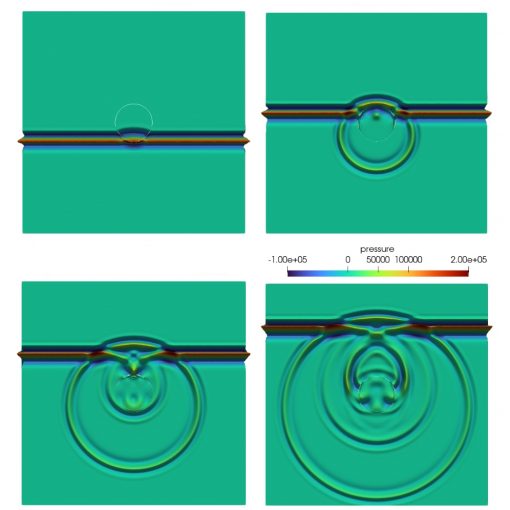A new MOX Report entitled “Shape-informed surrogate models based on signed distance function domain encoding” by Zhang, L.; Pagani, S.; Zhang, J.; Regazzoni, F. has appeared in the MOX Report Collection. Check it out here: https://www.mate.polimi.it/biblioteca/add/qmox/71-2024.pdf Abstract: We propose a non-intrusive method to build surrogate models that approximate the solution of parameterized partial differential equations (PDEs), capable of taking into account the dependence of the solution on the shape of the computational domain. Our approach is based on the combination of two neural networks (NNs). The first NN, conditioned on a latent code, provides an implicit representation of geometry variability through signed distance functions. This automated shape encoding technique generates compact, low-dimensional representations of geometries within a latent space, without requiring the explicit construction of an encoder. The second NN reconstructs the output physical fields independently for each spatial point, thus avoiding the computational burden typically associated with high-dimensional discretizations like computational meshes. Furthermore, we show that accuracy in geometrical characterization can be further enhanced by e! mploying Fourier feature mapping as input feature of the NN. The meshless nature of the proposed method, combined with the dimensionality reduction achieved through automatic feature extraction in latent space, makes it highly flexible and computationally efficient. This strategy eliminates the need for manual intervention in extracting geometric parameters, and can even be applied in cases where geometries undergo changes in their topology. Numerical tests in the field of fluid dynamics and solid mechanics demonstrate the effectiveness of the proposed method in accurately predict the solution of PDEs in domains of arbitrary shape. Remarkably, the results show that it achieves accuracy comparable to the best-case scenarios where an explicit parametrization of the computational domain is available.
You may also like
A new MOX Report entitled “A review of discontinuous Galerkin time-stepping methods for wave propagation problems” by Antonietti P.F.; Artoni, A.; Ciaramella, […]
A new MOX Report entitled “Modeling anisotropy and non-stationarity through physics-informed spatial regression” by Tomasetto, M.; Arnone, E.; Sangalli, L.M. has appeared […]
A new MOX Report entitled “Ask Your Data—Supporting Data Science Processes by Combining AutoML and Conversational Interfaces” by Pidò, S.; Pinoli, P.; […]
A new MOX Report entitled “Integrating state-sequence analysis to uncover dynamic drug-utilization patterns to profile heart failure patients” by Fontana, N.; Savaré, […]





